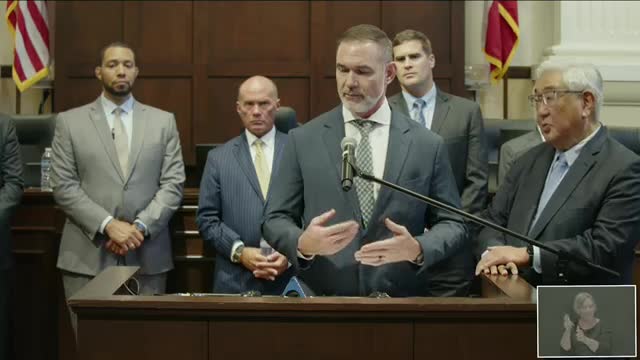Bexar County secures $21M for flood response improvements in San Antonio area
August 05, 2025 | Bexar County, Texas
This article was created by AI summarizing key points discussed. AI makes mistakes, so for full details and context, please refer to the video of the full meeting. Please report any errors so we can fix them. Report an error »

In a recent emergency press conference held on August 5, 2025, Bexar County officials discussed critical funding and improvements to flood management systems in response to recent weather events. The meeting highlighted the need for enhanced predictive flood modeling and the importance of collaboration among local government entities to ensure public safety.
Judge Nelson Wolff emphasized the urgency of addressing funding needs for unincorporated areas and suburban cities, estimating a total cost of $21 million for necessary improvements. This includes $10 million for the unincorporated areas and $11 million for the city of San Antonio. The Judge assured that funding would be secured, whether through county, city, or state resources, to protect Bexar County residents.
City officials echoed the Judge's sentiments, acknowledging that while the funding is not currently in the city’s budget, there is a consensus on the necessity of these improvements. Jeff Kaur from the city of San Antonio noted the importance of solving the flooding issues, stating, "I don't believe that most folks care what the color of the money is. They want us to solve this problem."
The San Antonio River Authority is set to implement a multi-phase approach to enhance flood management. Steve Metzler from the authority outlined immediate actions, including bringing offline gauges back into service and establishing flood elevation triggers for better emergency response. These improvements aim to provide advanced warnings to first responders, enhancing their ability to make life-saving decisions during flood events.
Public Works Director Art Reinhardt also shared resources available to the community, directing residents to bearflood.org, which provides information on approximately 200 gauges and water crossings across the county.
The discussions at this press conference underscore the collaborative efforts among Bexar County, the city of San Antonio, and the River Authority to address flooding challenges. As these initiatives move forward, the community can expect improved safety measures and more effective responses to future weather-related emergencies.
Judge Nelson Wolff emphasized the urgency of addressing funding needs for unincorporated areas and suburban cities, estimating a total cost of $21 million for necessary improvements. This includes $10 million for the unincorporated areas and $11 million for the city of San Antonio. The Judge assured that funding would be secured, whether through county, city, or state resources, to protect Bexar County residents.
City officials echoed the Judge's sentiments, acknowledging that while the funding is not currently in the city’s budget, there is a consensus on the necessity of these improvements. Jeff Kaur from the city of San Antonio noted the importance of solving the flooding issues, stating, "I don't believe that most folks care what the color of the money is. They want us to solve this problem."
The San Antonio River Authority is set to implement a multi-phase approach to enhance flood management. Steve Metzler from the authority outlined immediate actions, including bringing offline gauges back into service and establishing flood elevation triggers for better emergency response. These improvements aim to provide advanced warnings to first responders, enhancing their ability to make life-saving decisions during flood events.
Public Works Director Art Reinhardt also shared resources available to the community, directing residents to bearflood.org, which provides information on approximately 200 gauges and water crossings across the county.
The discussions at this press conference underscore the collaborative efforts among Bexar County, the city of San Antonio, and the River Authority to address flooding challenges. As these initiatives move forward, the community can expect improved safety measures and more effective responses to future weather-related emergencies.
View full meeting
This article is based on a recent meeting—watch the full video and explore the complete transcript for deeper insights into the discussion.
View full meeting
